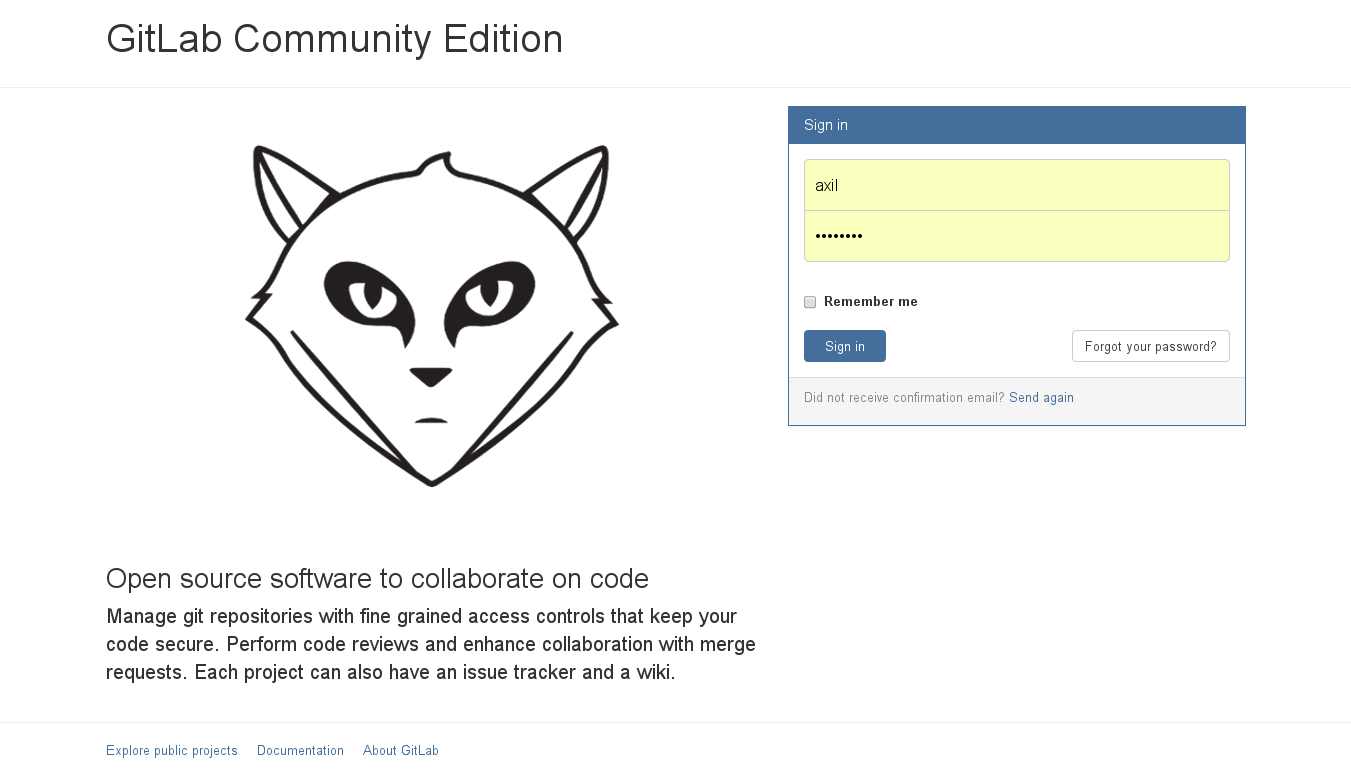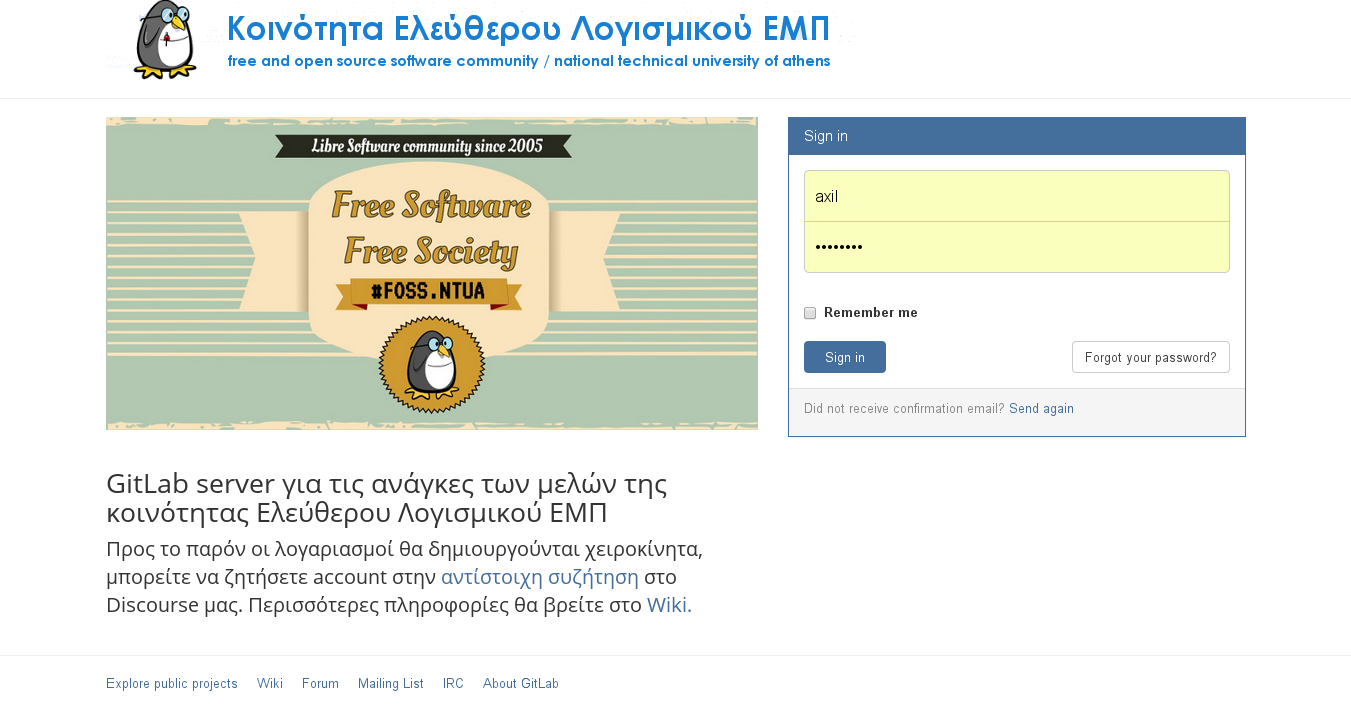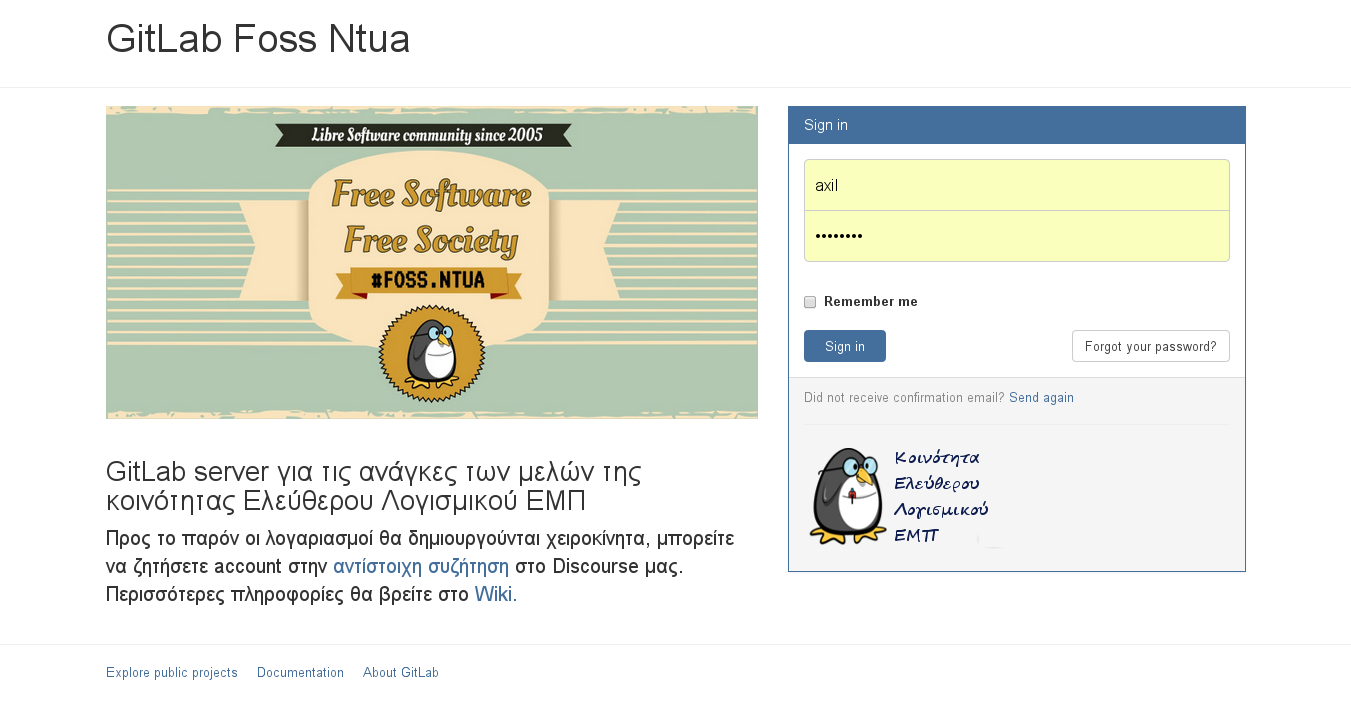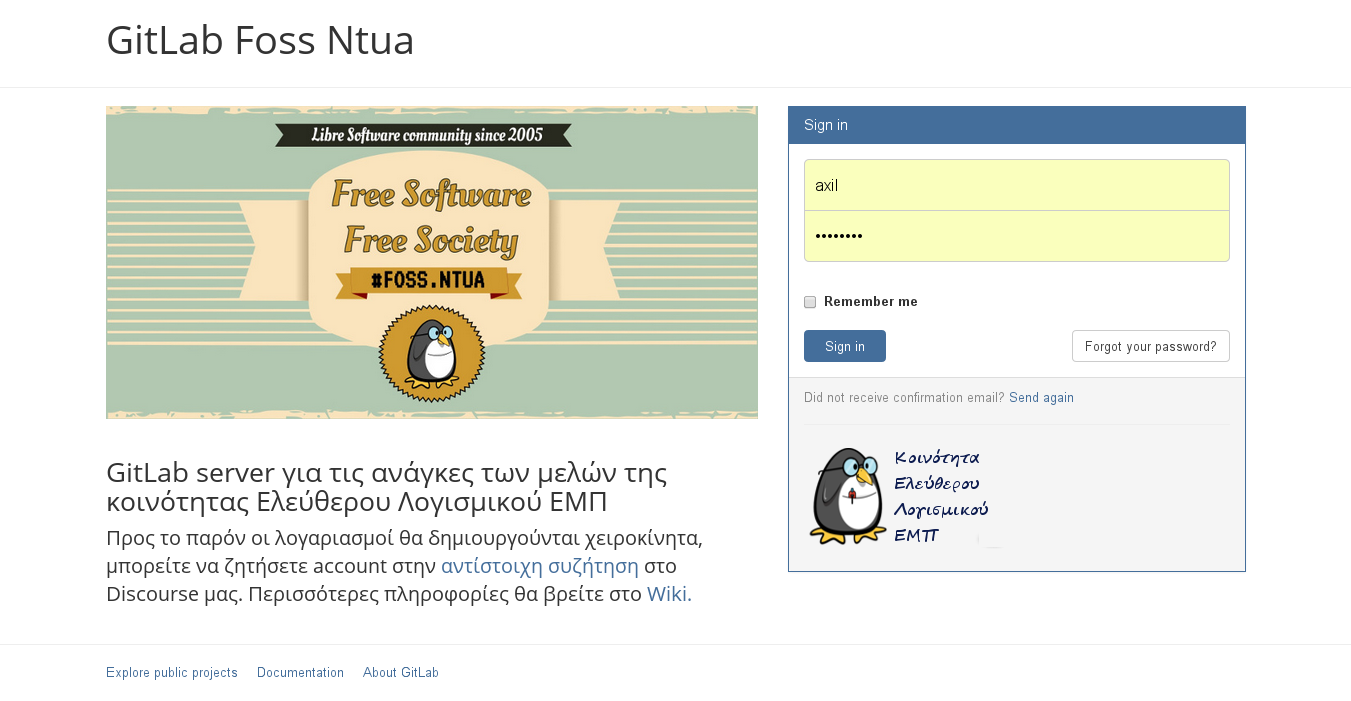Custom GitLab login page
~5 min read • in opensourceWith the release of GitLab 7.1, the login page now looks like the default Enterprise Edition. Although in EE customizing the page should be easier to configure, we can do the same with Community Edition following some simple steps. If you are familiar with haml and bootstrap this should be fairly easy for you. Again, prerequisite is to have at least GitLab 7.1. You can see the final changes in this commit.
Here is a before/after screenshot that we will gradually change.


Introductory steps
haml identation
It is important to use an editor that has set a tab to two spaces.
Haml depends on indentation so any mistake will yield errors. If you see
any 500 errors, it means something went wrong. Either check the unicorn logs
or better, run git diff to see if there are any indentation errors.
If you are using vim, create/open /home/git/.vimrc and place the following
lines:
set tabstop=2
set shiftwidth=2
set expandtab
That will ensure proper indentation handling.
git branch
In order to have more seamless future updates, let's create a separate git branch:
su - git
cd /home/git/gitlab/
git checkout -b custom_login_page
All changes we make from now on, will be on that branch without creating any mess in future updates. Read below on how to update.
The main file we need to change is app/views/layouts/devise.html.haml,
relative to where GitLab is installed.
Change brand logo
Choose the image you want to appear in the login page and place it in
/home/git/gitlab/app/assets/images/.
Next, open app/views/layouts/devise.html.haml with an editor and change
line 22 replacing brand_logo.png with your image name including
its extension.
Since we alter the production server, remember to recompile the assets so
that the Rails asset pipeline picks the new image (do that every
time you put a new file or change something in app/assets/):
cd /home/git/gitlab/
sudo -u git RAILS_ENV=production bundle exec rake assets:precompile
Finally, restart the GitLab service to see the changes.
Change text
Apart from the logo, there is a lot more we can change. Let's try changing the text.
Brand title
In order to change the text reading GitLab Community Edition, open
devise.html.haml and change %h1= brand_title in line 9 into
%h1 My custom brand title. Here, we removed the equal sign because it
is used by haml to evaluate and print ruby code (brand_title is a helper
method).
If you want an image instead, you can replace %h1= brand_title with
= image_tag 'my_banner.png'.
Body description
As you'd imagine, changing the body headline would require to replace
%h2 Open source software to collaborate on code with our own text, or
even remove it completely.
The main body can be changed by altering the text that lies below %p.lead.
Remember to indent correctly.
The text can also contain links. Place each link in its own line.
An example would be:
Accounts are temporarily created manually, you can ask one in our
= link_to "forum discussion", "https://forum.example.com/gitlab-reg"
You can find more info in the
= link_to "Wiki.", "https://example.com/wiki/index.php/GitLab"
A link can also have a target = "_blank" to open in a new window.
The format is:
= link_to "text", "https://example.com", target: "blank"
Change footer links
Footer links are in line 35. Just change their content or add new ones like we talked above.
Change font
The text I used was in Greek, so it looked aweful since the default font is Helvetica Neue. I decided to change it and use a webfont that supports my language. I went with Open Sans from https://www.google.com/fonts.
Now, there are 3 changes we need to do:
- Create our custom css file which imports the font and sets the classes
- Change
devise.html.hamland include the new css classes. - Include our custom css in
application.scss.
For the first step I created app/assets/stylesheets/custom_login.scss
with contents:
@import url(https://fonts.googleapis.com/css?family=Open+Sans&subset=latin,greek);
.custom-login {
h1, h2, p {
font-family: 'Open Sans', sans-serif;
}
}
Here I used sass. These are nested values that will be picked by html.
The second step is to change devise.html.haml and include the new
custom-login css class. There were 2 places where I needed to do that:
- .brand_text.hidden-xs
+ .brand_text.hidden-xs.custom-login
- %p.lead
+ %p.lead.custom-login
Third step is to include the custom css in application.scss. I opened
app/assets/stylesheets/application.scss and appended at the very end of
the file the following:
/**
* Styles for custom login page
*/
@import "custom_login.scss";
Finally, in order for the new css to get included in the asset pipeline I precompiled the assets one more time:
cd /home/git/gitlab/
sudo -u git RAILS_ENV=production bundle exec rake assets:precompile
And while I was trying to precompile the assets after adding my custom css,
it failed to do so because of a missing semicolon in application.scss.
I immediately opened a Merge Request, so either wait for it to get
merged or add it yourself for now. You got to love open source :)
Screenshots of before/after font change. You can see that before the changes Greek and English words are using different fonts.


Commit changes
The login page should now work correctly providing all the needed info for
our users. It's time to commit our changes. Check the diff with git diff
one more time, and make sure you are on the right branch with git branch.
It should show * custom_login_page. Add and commit the changed files:
git add app/
git commit -m 'Custom login page.'
Updating GitLab
The trickiest part is to maintain the code through the updates and avoid as many confilcts as possible.
Before each update, these are the basic steps:
- Stop gitlab service
- Run
git fetch --all - Run
git branch 7-1-stable origin/7-1-stable(replace with appropriate version) - Run
git rebase 7-1-stable custom_login - Follow the rest of instructions (db:migrate, assets:precompile, etc.)
The trick here is rebase. This git command will replay our changes over the new branch we fetched from upstream. If there are no conflicts, the custom login changes will remain. Otherwise, git will inform you and then you'd have to first resolve any issues before rebasing.
Reverting changes
In order to revert to the original login page, it's as simple as changing branches and restarting the GitLab service.
What about omnibus?
If you have installed GitLab through the omnibus packages, the GitLab root
path will be /opt/gitlab/embedded/service/gitlab-rails/ so make any
changes relative to that path. I haven't tested it yet though, so I don't
know whether any changes get rewritten with package updates (probably that
is the case).
On the other hand, if you work at a company that uses omnibus, consider going for the Enterprise Edition where this process would be more easier and at the same time you support the future development of GitLab :)